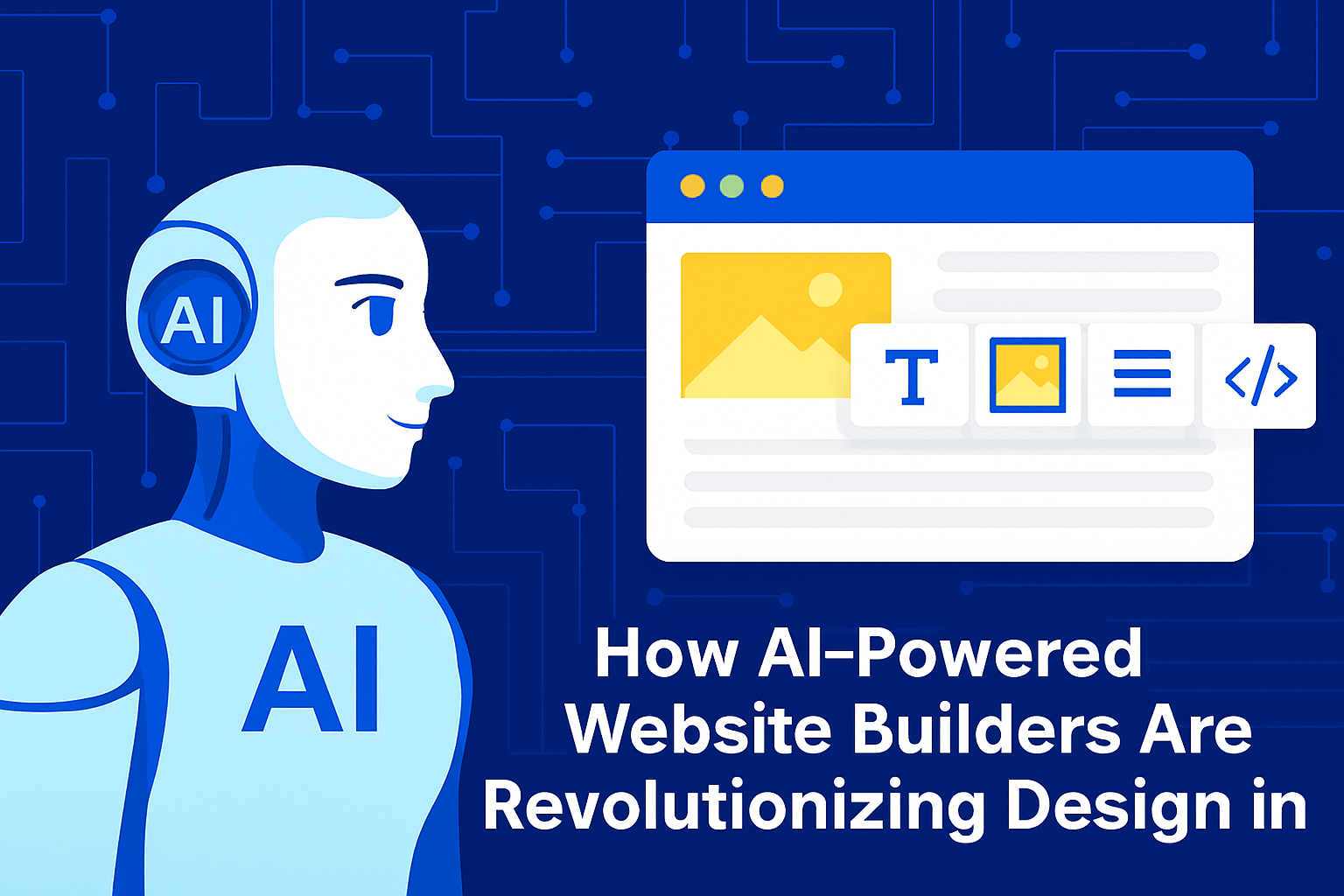How AI-Powered Website Builders Are Revolutionizing Design in 2025

The world of website creation is undergoing a massive transformation. In 2025, AI-powered website builders are not just tools for convenience—they’re reshaping how designers, developers, and businesses build online experiences. With artificial intelligence taking center stage, these smart builders are democratizing web design, blending creativity with automation, and producing websites faster, smarter, and more efficiently than ever before.
This article explores how AI-powered website builders are revolutionizing design in 2025, the top platforms leading the change, and what it means for businesses, freelancers, and digital agencies worldwide.
1. The Rise of AI-Powered Website Builders
The journey from manual coding to drag-and-drop editors was revolutionary. But the integration of artificial intelligence in web development takes that leap much further. AI-powered website builders use machine learning, natural language processing (NLP), and generative design algorithms to automatically create customized, optimized, and visually stunning websites in minutes.
Platforms like Wix ADI, Bookmark, Framer AI, and Zyro have proven how machine intelligence can analyze user inputs, industry data, and content intent to generate tailored website layouts that reflect brand personality and business goals.
Key Benefits Driving Adoption
-
Speed: Build a complete website in minutes.
-
Personalization: AI analyzes user behavior to personalize design and content.
-
Cost Efficiency: Reduces dependency on large design teams.
-
SEO Optimization: AI ensures every element—from meta tags to image alt text—is SEO-friendly.
As AI evolves, these builders no longer just design static layouts—they understand audience behavior and adapt dynamically.
2. How AI-Powered Website Builders Work
At their core, AI-powered website builders combine predictive analytics, automation, and user input interpretation. Here’s a simplified breakdown of how these intelligent systems operate:
-
Data Collection: Users provide essential details—business type, goals, color preferences, and content.
-
AI Analysis: The system interprets these inputs using machine learning algorithms trained on thousands of existing designs.
-
Automated Layout Generation: The builder proposes multiple designs, complete with typography, layouts, and image placements.
-
Content Generation: Integrated AI tools generate optimized copy, blog drafts, or CTAs aligned with brand tone.
-
Smart Optimization: The system refines layout and UX based on user engagement data and SEO analytics.
By 2025, these builders leverage Generative AI, enabling them to produce original visual assets and written content that maintain brand consistency and SEO integrity.
3. Top AI-Powered Website Builders Dominating 2025
The market is crowded with tools claiming AI capabilities, but only a few truly embody intelligent design automation. Below are some top AI-powered website builders revolutionizing design in 2025:
1. Wix ADI (Artificial Design Intelligence)
Wix’s AI system can instantly build a personalized website using user answers. In 2025, it integrates advanced ChatGPT-based assistants, providing real-time design feedback.
2. Framer AI
Framer AI turns simple text prompts into full websites, complete with animations and responsive design. Designers can describe their vision in natural language, and Framer delivers it instantly.
3. Bookmark
Bookmark’s AI assistant, AIDA, automatically creates customized layouts by learning user preferences. It’s known for eCommerce optimization and multilingual site creation.
4. Durable AI
A rising star, Durable builds entire business websites—including copy, branding, and contact forms—in under 30 seconds, making it a go-to tool for freelancers and startups.
5. Zyro
Zyro offers AI-driven copywriting, heatmaps, and layout suggestions that evolve as user behavior changes, helping businesses maximize conversions.
Each of these AI-powered website builders provides automation and customization that human designers can further refine, creating an ideal balance of speed and creativity.
4. The Role of AI in Enhancing Creativity
One common misconception is that AI eliminates creativity in design. In truth, AI-powered website builders enhance it. They remove repetitive and technical barriers, allowing designers to focus on high-level creative strategy.
Creative Benefits of AI in Web Design
-
Smart Recommendations: AI suggests trending color palettes and design patterns.
-
A/B Testing Automation: Builders analyze which design elements drive engagement.
-
Adaptive Learning: AI learns user preferences and refines future designs.
-
Image Enhancement: Tools like Adobe Firefly and Midjourney integrate to auto-generate visuals.
In 2025, AI creativity isn’t about replacing designers—it’s about empowering them with tools that think and create alongside humans.
5. AI-Driven Personalization and UX
User experience (UX) defines modern web success. AI-powered website builders now integrate behavioral analytics to deliver hyper-personalized experiences for every visitor.
How Personalization Works
-
AI tracks user interactions, clicks, and scroll depth.
-
It dynamically changes the homepage layout or featured content.
-
Predictive algorithms suggest products or services tailored to individual visitors.
For instance, an AI-driven eCommerce site can display different product banners for returning versus new customers. This adaptive design enhances engagement and boosts conversion rates.
6. SEO and Performance Optimization
AI doesn’t just design websites—it optimizes them. Every modern AI-powered website builder integrates SEO best practices by default.
AI’s Role in SEO
-
Keyword Optimization: AI analyzes search intent and auto-inserts relevant keywords.
-
Meta Tag Generation: Builders automatically create SEO-friendly meta titles and descriptions.
-
Voice Search Adaptation: AI structures content to suit conversational queries.
-
Site Speed Enhancements: AI compresses media files and streamlines code for faster load times.
By 2025, AI ensures that websites are search-engine ready from day one, giving small businesses a competitive edge without requiring SEO expertise.
7. Integrating Chatbots and Conversational Design
Chatbots have become essential for customer engagement, and AI-powered website builders seamlessly integrate conversational AI to improve user interaction.
Smart Chat Integration Features
-
Drag-and-drop chatbot builders with NLP-based conversation flows.
-
Integration with tools like ChatGPT, Dialogflow, or Microsoft Copilot.
-
Real-time learning from customer interactions to improve responses.
This means businesses can now launch fully functional, AI-enhanced websites that not only look good but also communicate intelligently.
8. The Future of AI-Driven Web Design in 2025 and Beyond
The impact of AI-powered website builders is only beginning. As generative AI models grow more sophisticated, we’ll see websites that design themselves continuously—adapting layout, messaging, and visuals based on real-time analytics.
Emerging Trends to Watch
-
Voice-based Design Commands: Users describe websites verbally, and AI executes.
-
Full AI-Branding Suites: AI creates logos, slogans, and brand guidelines automatically.
-
Predictive Maintenance: AI detects broken links or outdated content before users do.
-
Ethical Design Monitoring: AI ensures accessibility compliance and design inclusivity.
The future promises a blend of automation and artistry—where human imagination meets machine precision.
9. AI and Human Designers: Collaboration, Not Competition
The debate over AI replacing designers is fading fast. The truth is, AI-powered website builders function best when paired with human creativity. Designers can now focus on storytelling, UX emotion, and strategic branding while AI handles the heavy lifting.
Collaborative Workflow Example
-
Designer drafts creative vision.
-
AI generates structure, layout, and content.
-
Designer refines visuals, tone, and animations.
This synergy creates faster workflows, stronger brand alignment, and better user outcomes.
10. Why Businesses Should Embrace AI-Powered Website Builders
For startups, agencies, and enterprises, adopting AI-powered website builders offers immense strategic advantages:
-
Faster Market Entry: Launch websites in hours, not weeks.
-
Lower Costs: Eliminate the need for extensive technical teams.
-
Scalability: Easily duplicate and customize websites for multiple campaigns.
-
Data-Driven Decisions: Real-time analytics and AI insights improve marketing ROI.
As competition intensifies online, these intelligent platforms provide a decisive edge.
11. Challenges and Ethical Considerations
While AI offers efficiency, it also introduces new challenges. Overreliance on automation can lead to generic designs or ethical issues like biased content generation.
Key Concerns
-
Design Homogenization: Too much AI influence can make sites look similar.
-
Data Privacy: AI systems rely on user data—proper security is crucial.
-
Human Oversight: AI should assist, not make autonomous branding decisions.
Responsible use of AI-powered website builders ensures innovation remains ethical and creative integrity is preserved.
12. The New Era of Intelligent Design
By 2025, AI-powered website builders have moved beyond convenience tools—they’re redefining what’s possible in digital design. Businesses, freelancers, and marketers can now achieve professional-quality results without deep technical knowledge.
AI-driven creativity means websites can evolve in real-time, adapting to user needs, market trends, and SEO dynamics. The fusion of artificial intelligence and human imagination marks the dawn of a new era of intelligent web design—one that’s efficient, personalized, and endlessly innovative.
